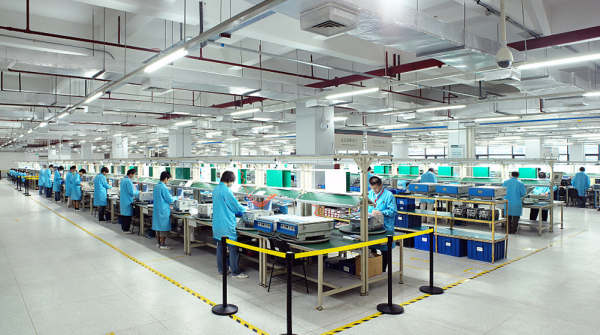The profiles of unique sound boasted by exorbitant diamond-like carbons (DLC) and carbon nanotubes (CNT) can be effortlessly replicated with inexpensive PET materials? Those familiar with Hi-Fi should recognize that dynamic drivers, a type of unit, have been around for decades with minimal structural evolution. Yet, some merchants, in their quest for exorbitant profits, endlessly fabricate product selling points on a pseudo-scientific level. What's even more amusing is that over time, they seem to have convinced themselves of their own tales.

Such accessories have already established a comprehensive industrial chain in China, with nearly every diaphragm manufacturing factory boasting its own simulation 3D design software. To craft a diaphragm design, one only needs to specify the external diameter and voice coil specifications, typically completed within 15 minutes. So, what exactly makes professional-level tuning so precious? This question warrants contemplation.

Among the myriad CHIFI (Chinese Hi-Fi) IEM brands, Moondrop stands as a quintessential representative. The details presented by many brands are strikingly uniform, with almost all emphasizing the diaphragm as a primary selling point. They accentuate how the diaphragm influences sound quality, whimsically marketing the "miraculous" effects of the diaphragm. There is even one particular brand touts its carbon nanotube diaphragm, yet an inadvertently publicized test report on social media revealed that their so-called "carbon nanotube diaphragm" is 99.99% PET, with a mere 0.01% being carbon nanotubes. In contrast, the KZ brand, renowned for its cost-performance ratio, consistently employs the most generic PET diaphragms, firmly resisting the temptation to sensationalize diaphragm technology.

Taking the recently debated Krila IEM from the KZ brand as an example, they boldly claim "no competitors under $1000." Despite consistently using the most basic PET diaphragms, Krila delivers astonishing audio quality. Without a doubt, Krila sets a reliable price point with its single dynamic and single balanced armature configuration. It even features a four-tier adjustment switch, all at a mere cost of $17. This completely overturns the users' perception of expensive tuning capabilities, allowing them to switch between different sound signatures without resorting to replacing the sound nozzles.

Exquisitely crafted, it incorporates the 10mm KZ exclusive "XUN" unit, paired with the "3D printed" shell typically found in high-end, pricier in-ear monitors. The sound channels are clearly visible, which is quite cool. In terms of tuning, the Krila leans more towards a U-shaped, neutral/bright technical timbre, effortlessly rivaling the sound quality of earphones priced under a thousand. The adjustment switches are not mere gimmicks; by toggling each switch, different auditory preferences are met, allowing users to freely customize their ideal sound. Achieving all this for just $17, it's hard not to be deeply impressed by the KZ Krila. Of course, other noteworthy attributes include their decade-long, unchanging and uninspiring packaging, as well as the ever-enigmatic three-letter model names.

A simple online search might elucidate why KZ IEM hold a dominant position amidst a sea of brands.
Founded in 2010, KZ IEM have a history spanning a decade. KZ stands as one of the rare brands in the Hi-Fi industry that truly owns its independent factory. They even possess a complete supply chain, signifying they have a genuine and comprehensive research, development, and production team, rather than outsourcing all "assembly" to contract manufacturers and then inflating prices through marketing hype. The KZ Krila epitomizes this very principle. This isn't just about competitive pricing but a testament to technological innovation and the inevitable progress of the times. Market competition allows everyone to experience high-quality music at affordable prices, ensuring acoustic technology surpasses mere gimmickry.

In stark contrast to KZ, other industry brands pursue high pricing and profits, each wanting a piece of the lucrative "pie." Various merchants tout their falsely claimed "upgraded" diaphragms or resort to "anime-themed" marketing, with prices easily reaching into the thousands. They habitually fabricate heartwarming and inspirational stories for their brands, enticing those audiophiles who often equate price with quality into willingly making a purchase.
Thus, amidst the ubiquitous exaggeration of LCP diaphragms, carbon nanotube diaphragms, diamond-like carbon diaphragms, beryllium-coated diaphragms, titanium-coated diaphragms, and others – some of which are so obscure they're hard to name – do they genuinely play a pivotal role?
Brands that utilize such diaphragms ardently advocate their enhancement to sound quality, particularly in the mid to high-frequency ranges.
These diaphragms share a common characteristic: high rigidity. However, an increase in diaphragm rigidity can result in a decrease in sensitivity during mid to low-frequency output, with only a slight boost in high and ultra-high frequencies. Thus, the sound performance conversion during the coil's vibration process doesn't truly necessitate such high-rigidity diaphragms.
When brand merchants hype up products with the aforementioned diaphragm materials, they often present them in the form of composite diaphragms. This so-called "composite diaphragm" is merely a thin layer of PU applied on top of the original diaphragm material. The underlying intent is to ensure that the coil, when outputting at large dynamics, isn't affected in its low-frequency output due to excessive diaphragm rigidity. Seen in this light, it seems like a case of putting the cart before the horse in terms of treating the product.
So, just how expensive can a so-called top-tier coil diaphragm be? One might need to gauge the mood of these merchants, as it seems to dictate the final pricing.
Comments
Post a Comment